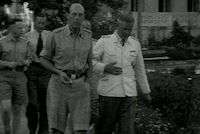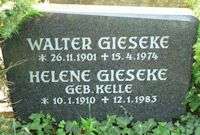Historian turns detective to solve film mystery

Dr. Harry Bennett, Associate Professor of History at Plymouth University, has spent years researching the bizarre tale and a book recording his work – titled The Nazi, The Painter and the Forgotten Story of the SS Road – is being published at the end of April.
The story began in 2005, when a small canister of film was discovered in a cupboard at Cullompton Baptist Church and handed into the South West Film and Television Archive in Plymouth.
Its precise contents were something of a mystery, but the grainy footage appeared to show German Officers during World War Two.
Dr. Bennett, a renowned expert on the period, was contacted shortly afterwards and said: “From the first moment I first saw the film, I was captivated by it. I had to know the identities of the people I was watching and what they were doing. The film only lasts 10 minutes but I have watched it a thousand times and spent years trying to find out all its hidden details.”
From his initial viewings of the film, looking at the road signs and uniforms on show, Dr. Bennett was able to deduce that it was shot in Ukraine at some point between 1941 and 1943.
Over the coming months, he was able to identify a number of Nazi officers convicted of war crimes after the war. These included Rudolf von Alvensleben, who was found guilty in absentia having escaped to Argentina where he was protected by the government of Juan Peron.

But the identity of the central figure in the film, a lieutenant-colonel in the SS known through the book as the ‘Fat Man’, remained something of a mystery.
But one day, while going through the Nazi files at the United States National Archive in Washington, the mystery was solved as he found a file belonging to Walter Gieseke. On the front were two photographs and Dr. Bennett said he instantly knew he had “looked into the man’s eyes a thousand times before”.
As he researched further, Dr. Bennett managed to uncover more details about Lieutenant-Colonel Gieseke, including the fact he had been the subject of a discontinued war crimes prosecution in the 1960s. But the exact reasons why the film was shot remain somewhat of a mystery to this day.
Walter Gieseke had been sent to Ukraine to head up a task force, with the objective of building a road from Germany into Russia. The workforce was made up of jews and Soviet prisoners – and tens of thousands of them were executed – but some way through the project, the decision was taken to construct a spur from the road and build a bridge from the city of Kerch into the Caucasus. The bridge was a personal project of Hitler himself.
Dr. Bennett said: “He was sent monthly updates, and since Hitler was passionate about film, it would have made sense to use that medium. Another possibility is Gieseke had a feeling the project was doomed to fail and wanted a record of events as his own personal insurance policy. Or it could have been a ‘home movie’ for himself.”
For his book, Dr. Bennett has used the testimonies of Jewish survivors, including Arnold Daghani, a Romanian artist who drew sketches of the prisoners at work and fought for years after to bring the perpetrators to justice.
He also traced Walter Gieseke to his final resting place, a grave in the German town of Burgdorf, where he was buried following his death in April 1974.
Dr. Bennett added: “This has been a real detective story for me and I have tried to keep it that way in the book, including all the wrong turns and false leads I have been down. My research into this short film has taken me all over the world and down some very unexpected avenues. I could never have expected any of it when I first saw the film in Cullompton seven years ago.”
More information: "The Nazi, The Painter and the Forgotten Story of the SS Road," by GH Bennett and published by Reaktion Books, goes on sale on 30 April priced at £20.
Provided by University of Plymouth



















